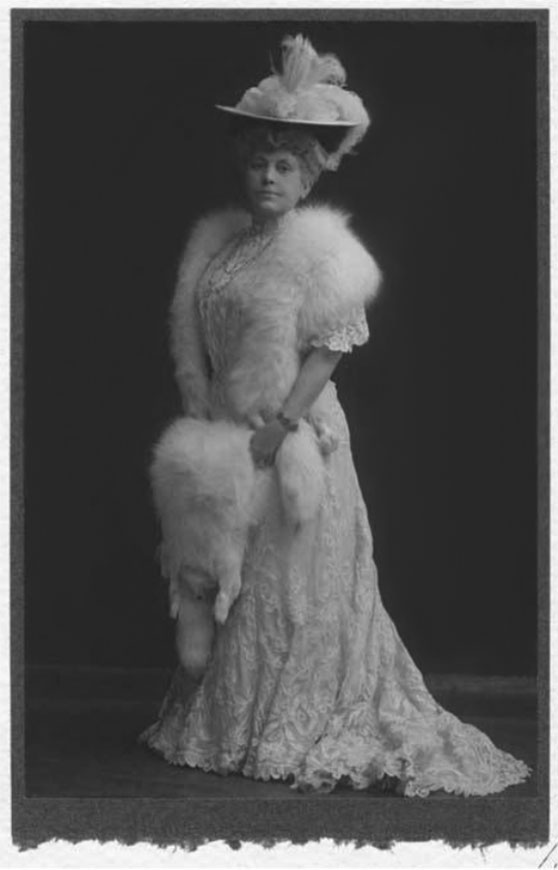The Ladies in the Parlor: Restoring Women’s Space in the Stimson-Green Mansion

The new carpet installed in the Ladies’ Parlor at the Stimson-Green Mansion.
By Kristy Conrad, Development Director, Washington Trust for Historic Preservation
Entering the Stimson-Green Mansion today, visitors and event attendees can marvel at the beauty and craftsmanship of the 119-year-old house’s first floor interiors. The entryway, with its ornately painted red-and-gold ceiling featuring stylized lions and curving tendrils reminiscent of English heraldry. The library, with its pointed-arch bookcases resembling windows in a Gothic church and its fireplace of carved wooden lions and metal dragon andirons. The dining room, paneled in sycamore, above which stretches a painted Renaissance-style tapestry.
In comparison with the rest of the interiors—dark, imposing, masculine—the parlor is decidedly different. Though smaller in size, the parlor is full of light and delicate detail. Decorated in the French Empire style, the room’s crowning design element is a stunning plaster Roman frieze featuring swans and elegantly robed women amidst garlands of flowers and laurel. Clearly, this was a room intended for the ladies of the house.
Specifically, it was built for Harriet Overton Stimson (1862-1936), wife of lumber baron C.D. Stimson, who commissioned Spokane architect Kirtland Cutter to build the Mansion for his family in 1901. (The Stimsons would live in the Mansion for the next 14 years.) In the parlor, Harriet hosted lunches when her local friends came to visit on Thursdays, in a time slot specially reserved for her by the other women in the neighborhood.
But these were no mere tea parties, nor were the attendees simply “ladies who lunch.” Under the graceful curves of swan and sylph, Harriet Stimson and her friends built many of Seattle’s most enduring institutions. A former piano teacher, Harriet helped found the Seattle Symphony, and together with Anna Herr Clise and other friends, she helped establish Children’s Orthopedic Hospital, now Seattle Children’s Hospital. Harriet was also a major benefactress of the Cornish School for the Arts, serving as chair of the Cornish board of directors.
Not only was Harriet Stimson herself a formidable civic leader, she created a dynasty of similarly powerful and philanthropic women. Her daughter, Dorothy Stimson Bullitt (1892-1989), built the King Broadcasting Corporation, encompassing television stations, radio stations, and production facilities across the Northwest, and founded the Bullitt Foundation. Dorothy’s daughters, Harriet Bullitt and Priscilla “Patsy” Bullitt Collins, in selling King Broadcasting Company some decades later, donated the classical radio station KING-FM to the Seattle Symphony, Seattle Opera, and what is now ArtsFund. Patsy (1920-2003) purchased her grandparents’ home, the Stimson-Green Mansion, in the 1980s and ran it as a public events venue for two decades before gifting it to the Washington Trust for Historic Preservation in 2001. Patsy’s sister, Harriet Bullitt (1924-), marking her 96th year in 2020, established the Icicle Fund supporting nonprofit organizations in North Central Washington and recently announced her decision to leave the Sleeping Lady Resort, developed in the early 1990s, to the Icicle Fund.
These four powerful women, from Harriet Stimson to Harriet Bullitt, helped build Seattle and in many ways Washington State as we know it today. It is fitting that we honor them in 2020, the century milestone of the 19th Amendment and celebration of women’s suffrage. It is equally fitting that we at the Washington Trust, in undertaking our restoration of the Stimson-Green Mansion, give full respect to the parlor and its importance as the domain of the Mansion’s women—to preserve and honor their stories and legacies as much as those of C.D. the lumber baron or Cutter the architect.
Over the past few years, in recognition of this legacy, the parlor has been the focus of a number of restoration projects. The Romanesque plaster frieze was painstakingly cleaned and restored. Most recently, the 1980s carpet (yes, dating from the days of Patsy Bullitt Collins herself) was removed. With funding from Washington State’s Heritage Capital Project Fund and 4Culture, and under the guidance of Theresa Freeman of SHKS Architects, a new carpet was designed and created by the British carpet masters at Axminster, featuring a historically accurate pattern in shades of cranberry and ivory. Not only does the new carpet replicate the type of floor covering that would have been seen in the heyday of the Mansion’s turn-of-the-20th-century construction, its curving lines of flower and vine mimic the floral garlands of the frieze above, and the colors further enhance the delicacy and lightness of the room in general. We think Harriet Stimson would approve!
If you’re interested in learning more about the Stimson-Green Mansion’s stories and the Washington Trust’s ongoing preservation of this important Seattle landmark, join us for one of our monthly tours, led by our resident Mansion expert Cathy Wickwire and offered the second Tuesday of every month. To sign up, visit preservewa.org/tours.

Harriet Overton Stimson. Photo from the Museum of History and Industry.
